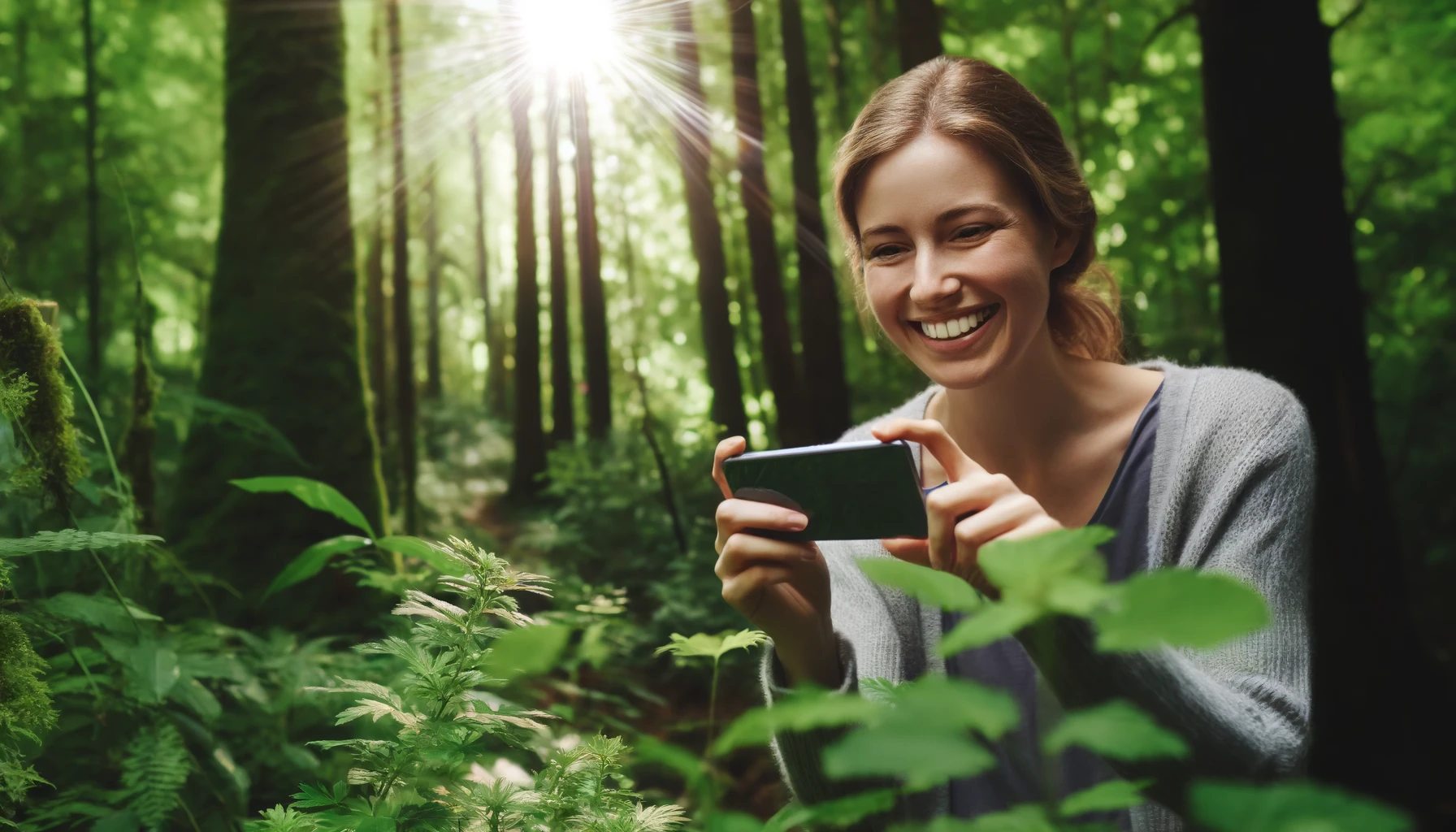Traveling for Flora Lovers: Places, Tips, Apps
Enchanting Destinations for Flora Lovers
1. Keukenhof Gardens, Netherlands
Renowned as the "Garden of Europe," Keukenhof is a breathtaking display of over 7 million bulbs in bloom, including tulips, daffodils, and hyacinths. As you stroll through the expansive gardens, you'll be captivated by the meticulously arranged flower beds, vibrant patterns, and the sheer diversity of species. Keukenhof also hosts various flower shows and events. For a truly unforgettable visit, plan your trip during the peak blooming period to witness the gardens in their full glory.
2. Singapore Botanic Gardens, Singapore
Designated as a UNESCO World Heritage Site, the Singapore Botanic Gardens boast an impressive collection of over 10,000 plant species, e.g., the iconic National Orchid Garden. This tropical paradise offers a lush and immersive experience: rainforest trails, themed gardens, serene lakes, etc. The gardens are divided into several sections. Each of them has its own charm.
3. Butchart Gardens, Canada
Nestled on Vancouver Island, the Butchart Gardens are a true horticultural masterpiece. Wander through the meticulously manicured gardens, e.g., the iconic Sunken Garden, Rose Garden, and Japanese Garden, each offering a unique and captivating floral display.
4. Kirstenbosch National Botanical Garden, South Africa
Situated at the foot of Table Mountain, Kirstenbosch is a botanical wonderland showcasing the rich flora of the Cape Floristic Region. Explore the diverse landscapes of fynbos and forests, and witness the stunning displays of proteas, ericas, and other indigenous plant species. The Tree Canopy Walkway that is also known as the "Boomslang" provides a bird's-eye view of the gardens and the surrounding flora.

5. Royal Botanic Gardens, Kew, United Kingdom
The Royal Botanic Gardens, Kew, often referred to simply as Kew Gardens, is a world-renowned botanical garden in London. It boasts over 50,000 living plants. This UNESCO World Heritage Site spans 300 acres and features glasshouses like the Palm House and the Temperate House. The Treetop Walkway offers a perspective that allows visitors to stroll among the treetops and observe the canopy layer of the gardens. Kew's extensive herbarium, library, and scientific research facilities make it a hub for botanical research and conservation.
6. Monet's Garden at Giverny, France
Claude Monet’s Garden in Giverny is a living masterpiece that inspired many of the artist's famous works. The garden is divided into two parts: the Clos Normand, with its vibrant flower beds arranged in harmonious color schemes, and the Japanese-inspired water garden, featuring the iconic water lilies and the Japanese bridge. Visiting Monet's Garden offers a glimpse into the natural beauty that fueled the creativity of one of history's greatest painters. The carefully designed landscapes change with the seasons, ensuring that each visit offers a new and enchanting experience.
7. Longwood Gardens, United States
Located in Pennsylvania, Longwood Gardens is one of the premier horticultural display gardens in the United States. Spread across 1,077 acres, it features over 11,000 types of plants and a stunning array of gardens, woodlands, and meadows. Highlights include the grand conservatory, the Italian Water Garden, and the Flower Garden Walk. Seasonal displays, including the renowned Christmas lights and fountain shows, draw visitors year-round. Longwood's combination of horticultural excellence, innovative design, and educational programs makes it a must-visit destination for plant lovers.
8. Jardim Botânico, Rio de Janeiro, Brazil
The Jardim Botânico in Rio de Janeiro is a lush tropical paradise that showcases the rich biodiversity of Brazil's flora. Established in 1808, the garden spans 350 acres and houses over 6,500 species of plants. Visitors can explore various themed sections, including the orchidarium, bromeliad house, and the sensory garden. The Avenue of Royal Palms, a striking pathway lined with towering palm trees, is a highlight. The garden's location at the foot of Corcovado Mountain offers stunning views and a tranquil escape from the bustling city.
9. Desert Botanical Garden, United States
Located in Phoenix, Arizona, the Desert Botanical Garden focuses on the unique and diverse plant life of desert environments. With over 50,000 plants, the garden offers a fascinating look at how flora adapt to arid conditions. Visitors can explore themed trails, such as the Sonoran Desert Nature Loop and the Plants & People of the Sonoran Desert Loop, which highlight the relationship between plants and indigenous cultures. Seasonal events, art installations, and educational programs enhance the visitor experience, making it an engaging destination for those interested in xeriscaping and desert ecology.
10. Gardens by the Bay, Singapore
Gardens by the Bay is a futuristic garden complex in the heart of Singapore, known for its innovative design and spectacular plant displays. The complex includes the Flower Dome, the largest glass greenhouse in the world, and the Cloud Forest, a misty mountain environment with a 35-meter indoor waterfall. The Supertree Grove, featuring towering vertical gardens, offers a unique blend of nature and technology. The gardens are illuminated at night, creating a magical atmosphere. Gardens by the Bay showcases a wide variety of plant species and integrates sustainable practices, making it a model for modern botanical gardens.
Tips for Flora-Focused Travels
1. Research and Plan Ahead
Before embarking on your floral adventure, research the best times to visit your desired destinations based on blooming seasons. Many botanical gardens and parks have specific periods when certain plants are at their peak. For example, Keukenhof is best visited in spring, while the Butchart Gardens are stunning in summer. Understanding the seasonal variations and planning your visit accordingly will ensure you experience the flora at its most vibrant and beautiful. Additionally, check for any special events, tours, or exhibitions that might enhance your visit.
2. Pack the Right Gear
Invest in a good camera or smartphone with a decent camera to capture the beauty of the flora you encounter. High-resolution images will allow you to appreciate the intricate details of the plants and share your experiences with others. Additionally, consider bringing a small notebook or field guide to document your observations and findings. Recording your thoughts, sketches, or notes about the plants you see can enhance your understanding and appreciation of the flora. Comfortable walking shoes, sun protection, and a reusable water bottle are also essential for a pleasant and sustainable visit.
3. Respect the Environment
When visiting natural habitats or botanical gardens, always follow the designated paths and adhere to any rules or regulations in place. Avoid picking or damaging plants, as this can disrupt the delicate ecosystems. Respect the wildlife and other visitors by maintaining a quiet and mindful presence. In natural settings, leave no trace by carrying out any litter and minimizing your impact on the environment. By practicing responsible tourism, you help preserve these beautiful places for future generations to enjoy.
4. Join Guided Tours
Many botanical gardens and parks offer guided tours led by knowledgeable experts. These tours can provide valuable insights into the flora, their cultural significance, and conservation efforts. Guides often share interesting stories and facts that you might miss on a self-guided visit. Additionally, guided tours can offer access to areas that might be restricted to the general public, providing a more in-depth experience. Check the garden's website or visitor center for tour schedules and options.
5. Connect with Local Communities
Engage with local communities, attend workshops, or participate in educational programs to gain a deeper understanding of the region's flora and its importance in the local culture and traditions. Many botanical gardens host events, lectures, and hands-on activities that allow visitors to learn from experts and interact with other enthusiasts. These experiences can enrich your visit and provide a broader perspective on the role of plants in human life. Support local businesses, such as plant nurseries or craft markets, to further connect with the community and contribute to the local economy.
6. Embrace Local Cuisine
Exploring local cuisine can offer insights into the region's flora. Many traditional dishes are made using indigenous plants, herbs, and spices. Trying these foods not only enhances your travel experience but also deepens your understanding of how local communities use and value their native flora. Visit local markets, food festivals, and restaurants to sample the best of regional cuisine. Engage with locals to learn about the culinary uses of different plants and how they contribute to cultural traditions.
7. Document Your Journey
Creating a travel journal or blog can be a rewarding way to document your floral adventures. Write about the plants you encounter, the places you visit, and the experiences you have along the way. Include sketches, photographs, and notes on interesting facts or observations. This practice not only helps you remember the details of your trips but also allows you to share your passion with others. Additionally, a well-maintained journal can serve as a valuable resource for future travels and botanical studies.
8. Participate in Conservation Efforts
Many botanical gardens and nature reserves offer volunteer opportunities for visitors to participate in conservation projects. This can include activities such as planting native species, removing invasive plants, or assisting with research programs. Participating in these efforts can provide a deeper connection to the environment and a sense of contribution to the preservation of the flora you love. Check the websites of the destinations you plan to visit for information on volunteer programs and how you can get involved.
9. Learn from Experts
Taking courses or workshops on botany, horticulture, or ecology can greatly enhance your understanding and appreciation of plant life. Many botanical gardens and educational institutions offer short-term programs or lectures by experts in the field. These opportunities allow you to gain in-depth knowledge, ask questions, and engage in discussions with professionals and fellow enthusiasts. Whether it's a weekend workshop or a longer course, investing in your education can enrich your botanical travels.
10. Share Your Passion
Sharing your love for flora with others can be incredibly fulfilling. Organize plant walks, join or start a botanical club, or give talks at local schools or community centers. Use social media platforms to connect with other plant enthusiasts, share your experiences, and inspire others to appreciate the beauty and importance of plants. By spreading your passion, you contribute to a greater awareness and appreciation of the natural world.

11. Optimize Your Photography Skills
Capturing the beauty of flora can be as rewarding as experiencing it firsthand. To make the most of your botanical photography, invest time in learning basic photography skills. Understand concepts such as composition, lighting, and depth of field. Use a macro lens for close-up shots to capture the intricate details of flowers and plants. Experiment with different angles and perspectives to add variety to your photos. Early morning and late afternoon, known as the golden hours, provide the best natural lighting for photography.
12. Create a Themed Travel Itinerary
Crafting a themed travel itinerary around flora can enhance your experience. Focus on specific types of gardens, such as Japanese gardens, rose gardens, or alpine gardens, and plan your visit accordingly. Alternatively, choose destinations that are famous for certain plant species, like orchids, cacti, or ferns. This approach allows for a more in-depth exploration and appreciation of particular aspects of plant life. A themed itinerary can also make your travel more organized and purposeful.
13. Engage in Citizen Science Projects
Participate in citizen science projects during your travels. Many organizations run programs that allow travelers to contribute to scientific research by recording observations of plants and wildlife. Projects like these help scientists gather valuable data and often include educational components that enhance your understanding of the local flora. Check websites like iNaturalist or local conservation organizations for ongoing projects you can join.
14. Travel Sustainably
Traveling sustainably is crucial for preserving the natural beauty you seek to explore. Opt for eco-friendly accommodations that prioritize conservation and sustainability. Use public transportation, bike, or walk whenever possible to reduce your carbon footprint. Support local businesses and communities by purchasing locally made products and eating at locally owned restaurants. Additionally, avoid using single-use plastics and practice the principles of "leave no trace" to minimize your environmental impact.
15. Connect with Botanical Societies
Join botanical societies or plant clubs related to your travel destinations. These organizations often have local chapters that host events, garden tours, and lectures. Connecting with these groups can provide insider knowledge, access to private gardens, and the opportunity to meet fellow plant enthusiasts. Membership in botanical societies can also offer discounts at gardens and nurseries, enhancing your travel experience.
Handy Apps for Flora Lovers
1. AI Plant Finder
This app uses advanced image recognition technology for flower identification simply by taking a picture. It provides detailed information about the plant, including its scientific name, family, and characteristics. AI Plant Finder is a valuable tool for both novice and experienced plant enthusiasts, offering a convenient way to learn about the flora you encounter. The app also allows users to create a personal collection of identified plants, making it easy to keep track of your discoveries and revisit them later.
2. Pl@ntNet
Pl@ntNet allows you to identify plants by uploading a photo. It also includes a vast database of plant species from around the world, making it a valuable resource for travelers. The app's community-driven platform encourages users to contribute their observations, helping to expand the database and improve accuracy. Pl@ntNet's intuitive interface and comprehensive information make it an excellent companion for botanical adventures. Whether you're in a familiar garden or exploring a remote wilderness, Pl@ntNet can help you identify and learn about the plants around you.
3. iNaturalist
This app is a social network for nature enthusiasts, allowing you to record and share observations of plants, animals, and other organisms. It also provides a platform for connecting with like-minded individuals and learning from experts. iNaturalist's collaborative approach fosters a sense of community and encourages users to contribute to scientific research. The app's identification features are supported by a robust database and expert validation, ensuring accurate and reliable information. By using iNaturalist, you can not only enhance your knowledge but also contribute to global biodiversity studies.
4. Leafsnap
Developed by researchers at Columbia University, Leafsnap uses visual recognition technology to identify trees by analyzing their leaves. It's a handy tool for exploring urban forests and parks. Leafsnap's detailed images and descriptions make it easy to learn about different tree species and their characteristics. The app also includes a field guide with information on tree habitats, uses, and conservation status. Leafsnap is particularly useful for those interested in dendrology or urban ecology, providing a wealth of information at your fingertips.
5. Seek by iNaturalist
This app leverages artificial intelligence to identify plants, animals, and other organisms in real-time using your device's camera. It's a great tool for exploring new environments and learning about the local flora and fauna. Seek's user-friendly interface and gamified approach make it engaging and accessible for all ages. The app encourages exploration and discovery by awarding badges for observations and challenges. Seek is an excellent choice for families, educators, and anyone curious about the natural world.
Conclusion
Whether you're a seasoned botanist or a budding plant enthusiast, exploring the world's floral wonders can be a truly enriching experience. By visiting these enchanting destinations, following helpful tips, and utilizing handy apps, you'll be well-equipped to embark on unforgettable botanical adventures. From the vibrant displays of Keukenhof Gardens to the futuristic marvel of Gardens by the Bay, the planet offers a myriad of locations that showcase the diversity and beauty of plant life.
Remember to plan ahead, respect the environment, and engage with local communities to make the most of your travels. Documenting your journey, learning from experts, and participating in conservation efforts can deepen your appreciation for flora and contribute to preserving these natural treasures. Utilize the numerous apps available to enhance your experience, identify plants, and share your discoveries with a global community of nature enthusiasts.
Happy travels, and may your journey be filled with the beauty and wonder of nature's floral masterpieces! Whether you're strolling through a serene Japanese garden or hiking in a lush rainforest, let the vibrant colors, intricate patterns, and diverse species of the world's flora inspire and delight you. Embrace the adventure, and let the plants lead the way.
Popular

Travel Treasures: Navigating the World's Most Popular Holidays
Dive into the heart of global festivities with Dutch Vacation Vibes! From the magical Christmas markets of Europe to the vibrant Carnival in Brazil and the traditional Oktoberfest in Germany, our ulti...
The Food Lover’s Guide to Traveling
Indulge in a culinary adventure with our food lover’s guide to traveling. Discover top culinary destinations, from Tokyo’s Michelin-starred excellence to Mexico City’s vibrant street food cultur...
